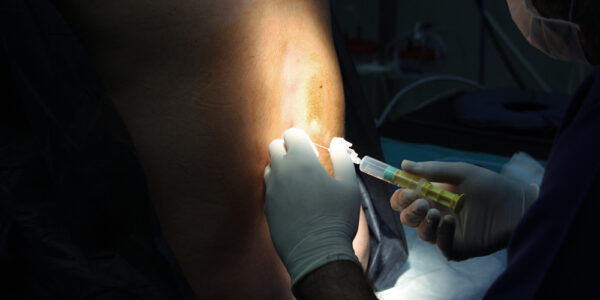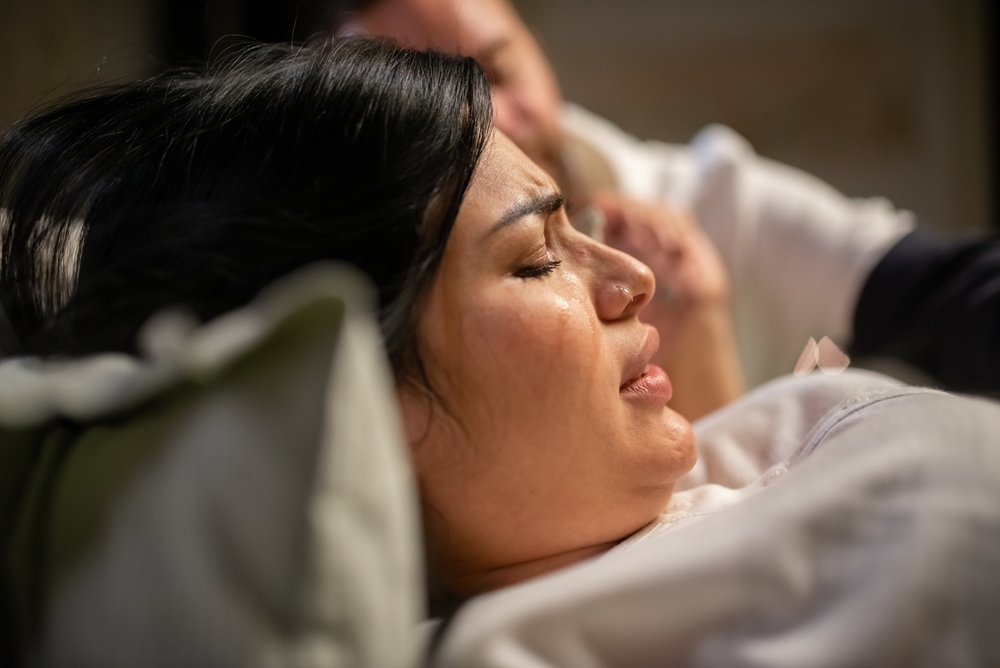By Dr. Brian Launius, M.D. — Anesthesiologist
Advancements in neuraxial anesthesia should always enhance what providers already bring to each case and each patient. Anatomy, comorbidities, or procedural history present serious barriers to traditional landmark techniques. Technology can offer additional pathways to success.
I was able to put this theory into practice with Accuro Neuraxial Guidance — a handheld ultrasound device specifically developed for succeeding in challenging epidural and spinal anesthetic procedures. My patient was a complex, high-risk labor patient whose successful epidural placement was directly facilitated by Accuro Neuraxial Guidance. The outcome of this case — and many more cases like it — made my decision to integrate this technology into my routine clinical practice an obvious and easy choice. This case invites reflection on what becomes possible when we combine our expertise with patient-centric medical technology.
Patient Presentation
My patient presented for induction of labor at a rural community hospital. She had a BMI of 60 (160 kg) and a complex obstetric history, including a traumatic experience with failure of neuraxial anesthesia at a tertiary care center during her first delivery, ultimately resulting in emergent general anesthesia for C-section.
Despite successful home births thereafter, gestational diabetes and hypertension in her current pregnancy necessitated hospital-based delivery. With her physical and psychological profile, standard palpation-based techniques for neuraxial access were anticipated to be extremely challenging. She was anxious. And I had serious concerns about the viability of palpation-guided needle placement for several reasons:
- Palpation of bony landmarks wasn’t feasible due to the patient’s BMI profile.
- The epidural space depth was highly uncertain.
- There was a high likelihood of multiple procedural attempts.
- There was a high risk of failed epidural placement, potentially resulting in a general anesthetic with surgical delivery.
- The patient’s anxiety surrounding anesthesia care elevated the risks associated with hypertension.
These factors combined to make ultrasound-guided preprocedural assessment extremely beneficial.

Planning and Execution
For this patient, an approach that addressed her anesthesia-related anxiety began well in advance of labor. During the outpatient consultation, the Accuro handheld ultrasound guidance system was introduced as part of the shared decision-making process. The goal was not only to optimize procedural outcomes but also to establish rapport and real trust in the care pathway itself.
Accuro was used to visualize the patient’s spinal anatomy, offering objective insight into midline location and depth to the epidural space in the absence of palpable surface landmarks. With this data, we were able to anticipate challenges and make targeted decisions — specifically, selecting an extended-length Tuohy needle and confirming the feasibility of neuraxial access with a high degree of confidence. That confidence was shared with the patient, reducing anticipatory anxiety and helping re-establish a sense of agency in the process.
When the patient presented in early induction of labor, Accuro was again used at bedside to validate midline alignment and interlaminar spacing. With depth to the epidural space confirmed, the anesthetic plan was executed using a single insertion attempt and a loss-of-resistance to saline technique. The catheter was placed without difficulty.
Clinical Outcomes
No paresthesia, dural puncture, or adverse events were encountered. Analgesia was effective throughout the course of labor, with a greater confidence that a general anesthetic could be avoided in the event that surgical delivery might have become necessary. The patient remained comfortable, oriented, and engaged throughout the process. Ultimately, she delivered a healthy infant vaginally without incident.
But equally significant was the psychological outcome. For this patient, whose previous experience with anesthesia had been marked by distress and a loss of control, this labor marked a turning point. The integration of ultrasound into the planning and execution of care offered predictability, safety, and a new clinical narrative. Yes, it certainly bridged gaps of clinical uncertainty and risk, but its potential for enriching communication, trust, resilience, and rapport between providers and patients in challenging cases is incredibly powerful as well.

Enhancing Care
This case demonstrates how integrating ultrasound guidance into neuraxial anesthesia can fortify our role in providing care in the most challenging cases. Accuro introduced clarity where traditional methods might have resulted in uncertainty. It opened new options, enabled precise planning, reduced risks, and enhanced patient satisfaction.
Notably, this outcome was not dependent on abandoning existing skills or frameworks; it was made possible by supplementing clinical experience with a precision tool designed for informed decision-making. It allowed me to do what I do best procedurally, when the context would otherwise have prevented me from even applying the techniques my expertise and career have positioned me to deliver well.
Imagine a mechanism that enables you to apply your expertise safely in cases where you’d otherwise be prudent to defer care. How would real-time midline confirmation impact procedures in patients with altered or obscured anatomy? How could objective depth inform your needle selection? How can proactive imaging turn difficult patient-provider conversations into patient-provider partnerships?
In this case, ultrasound guidance certainly expanded my clinical options. It enhanced my patient’s confidence and satisfaction. It gave me the context-specific information I needed to move forward with the best option for the patient and to do so prudently.
Accuro Neuraxial Guidance
Today, I use Accuro Neuraxial Guidance in just about every procedure. It’s easy to use, it’s efficient, and it’s effective in a wide variety of complex cases. And I encourage anesthesia providers to consider the advantages of ultrasound guidance in their neuraxial anesthesia workflows. Imagine what’s possible for your practice and patients with this in your toolkit.
